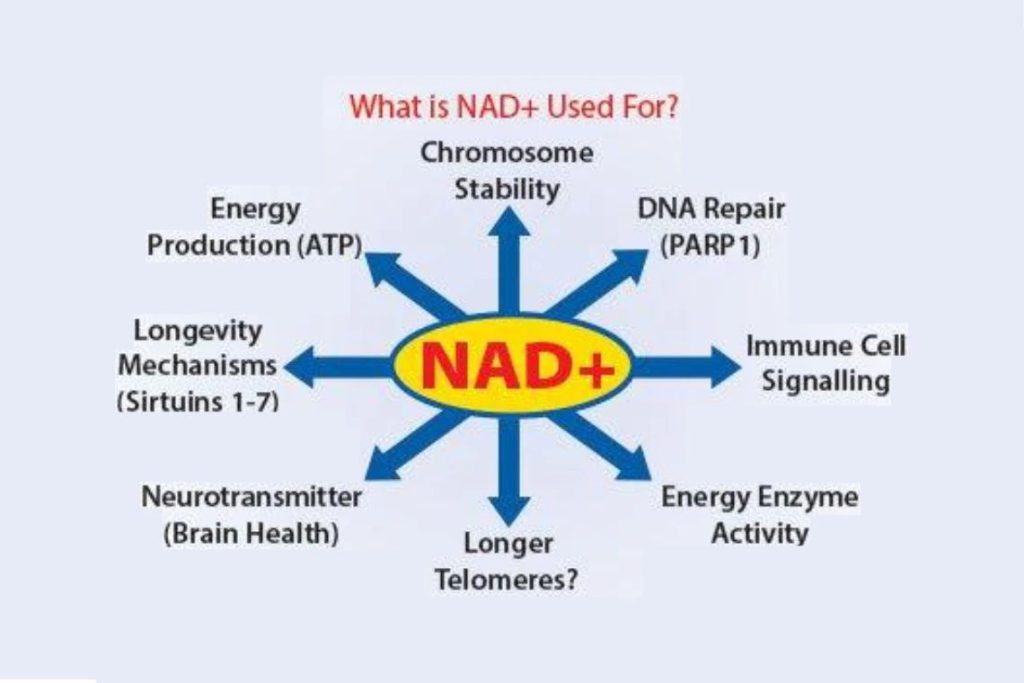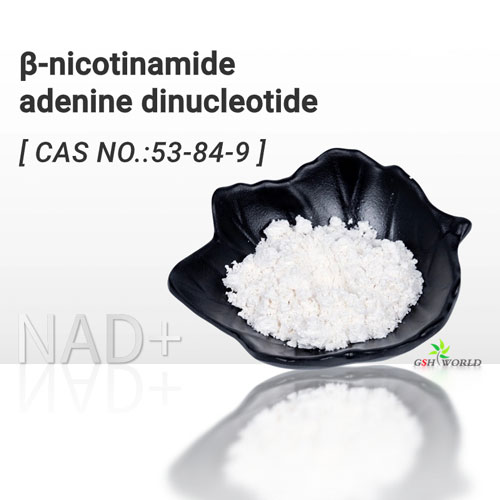NAD+, this seemingly ordinary coenzyme molecule, actually contains endless mysteries of life. From energy metabolism to DNA repair, from longevity genes to insulin metabolism, NAD+ guards the fire of our lives in its own unique way.
NAD+ : The secret key to Life Energy
NAD+, full name of nicotinamide adenine dinucleotide, is an indispensable key coenzyme in living organisms.
It not only plays a central role in the energy production of cells, but also deeply participates in the longevity mechanism of cells, and has become a hot spot in the scientific community to explore health and aging.
Let’s unravel the mystery of NAD+, learn about its history, function, how it is generated, and its potential in the field of anti-aging.
The history of NAD+
The story of NAD+ goes back more than a century.
In 1906, William John Young and Arthur Harden first discovered a coenzyme that promotes sugar fermentation in saccharomyces cerevisiae, which is the prototype of NAD+ – “coenzyme starter”.
Scientists have continued to unravel the mystery of NAD+.
- In 1929, Harden and Hans von Euler-Kelpin won the Nobel Prize for their work on fermentation, along with their discovery of the chemical structure and properties of NAD+.
- In 1930, Nobel laureate Warburg discovered that NAD+ plays a key role in facilitating countless biochemical reactions in the body, especially in intermolecular electron transfer.
- In the mid-20th century, Arthur Kornberg discovered the mechanisms of DNA replication and RNA transcription in NAD+ research.
- In 1958, researchers Jack Price and Philip Handler discovered three biochemical pathways by which niacin is converted to NAD+.
- In 1976, Rechsteiner discovered another important function of NAD+.
- In 2000, Guarente showed that the activity of sirtuin SIR2 was dependent on NAD+.
Biological function of NAD+
NAD+ is crucial for the cell’s power plants, the mitochondria, which it helps produce the energy the cell needs.
It functions as a coenzyme in the mitochondria, allowing the creation of chemical energy that our bodies can use.
Metabolic processes such as glycolysis, the citric acid cycle (TCA/ Krebs cycle), and the electron transport chain within the mitochondria all rely on NAD+ to function. As ligands, NAD+ binds to enzymes and transfers electrons between molecules.

NAD+ is an oxidizing agent that takes electrons from other molecules to turn into its reduced form, NADH.
NADH can become a reducing agent, donating the electrons it carries.
Since electrons are the atomic basis of cellular energy, the transfer of electrons between molecules means that NAD+ works almost like a rechargeable battery.
Without shock, electrons cannot be returned to their charged state, and the same is true in our cells.
NAD+ provides the molecules with the shock they need to become active again, and in this way, NAD+ is able to increase or decrease enzyme activity, gene expression, and cell signaling.
Generation mechanism of NAD+
In order to maintain NAD+ levels in the body, organisms have developed a variety of production pathways. Humans synthesize NAD+ mainly through the de-novel pathway, the Pryce-Handler pathway, and the remedial pathway.
The remedy is particularly compelling.
It uses niacinamide (NAM), a metabolite of NAD+, as a raw material to regenerate NAD+ through a series of enzymatic reactions, providing cells with an efficient NAD+ recycling mechanism.
NAD+ and DNA repair
As a very useful coenzyme, NAD+ can activate repair proteins such as sirtuins.
sirtuins, often referred to as longevity genes, are a group of enzymes involved in cellular stress response, promoting cellular damage repair, and also involved in insulin production and secretion.
They play a key role in maintaining healthy cellular function and also play an important role in aging.

sirtuin activation helps repair DNA damage, counter genomic instability, and slow the aging process, but these activations depend on the availability of NAD+ to work.
Another important protein involved in DNA repair, poly (ADP-ribose) polymerase (PARP), also depends on the presence of NAD+ to work.
With age, NAD+ levels gradually decline, and the ability to repair DNA damage is also weakened.
NAD+ and insulin metabolism
NAD+ not only plays an important role in energy metabolism and DNA repair, but is also closely related to insulin metabolism.
Studies have shown that NAD+ precursors, such as NMN, improve insulin production and activity and reduce the expression of genes associated with oxidative stress, inflammation, and circadian rhythm disruption, thereby improving liver insulin resistance caused by a high-fat diet.
This discovery provides new ideas for the prevention and treatment of metabolic diseases such as diabetes.
Looking into the future of NAD+ research
Despite the potential of NAD+ in the field of anti-aging, there are still many unknowns waiting to be explored.
With the deepening of research and technological advances, we have reason to believe that in the near future, NAD+ and its precursors will become an important weapon for human health and longevity.
At the same time, we also need to treat these findings with caution to ensure their safety and efficacy in clinical applications.
References:
- [1]Amjad S, Nisar S, Bhat AA, et al., 2021. Role of NAD+ in regulating cellular and metabolic signaling pathways. Mol Metab, 49:101195.
- [2]Bai P, Canto C, Brunyanszki A, et al., 2011a. PARP-2 regulates SIRT1 expression and whole-body energy expenditure. Cell Metab, 13(4):450-460.
- [3]Bai P, Canto C, Oudart H, et al., 2011b. PARP-1 inhibition increases mitochondrial metabolism through SIRT1 activation. Cell Metab, 13(4):461-468.


